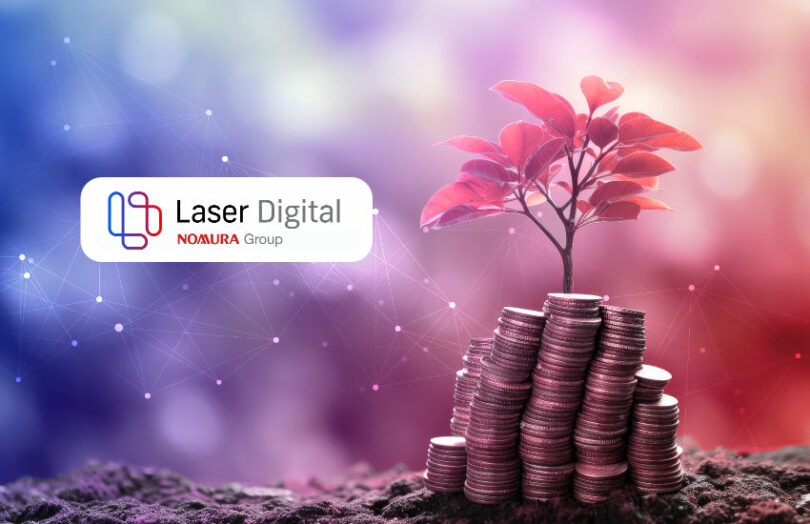In this opinion piece, Olivier Dang, Head of Ventures at Nomura’s digital asset subsidiary Laser Digital, explores the impact of tokenization in the asset management industry.
The financial services industry is at a tipping point of a transformative shift, fueled by the rise of tokenization, a process that unlocks the potential of blockchain technology to revolutionize the way we interact with financial instruments. Tokenization, the digital representation of real- world assets on a blockchain, is poised to reshape asset management, democratizing access to previously illiquid investments and ushering in an era of enhanced efficiency and transparency.
At Laser Digital, we are at the forefront of this revolution, leveraging our financial expertise and deep understanding of blockchain technology to push the boundaries of responsible financial innovation. Backed by Nomura, a global financial powerhouse, we have witnessed firsthand the transformative power of blockchain and are confident that tokenization will become the prevailing paradigm for securities issuance and distribution.
A $1tn Opportunity Awaits
According to our estimates, the tokenization ecosystem could generate a staggering $1 trillion in revenue by 2030, as institutional investors and retail participants alike embrace the transformative capabilities of this technology. We have actively invested in startups across the tokenization value chain, including infrastructure providers, tooling companies, and venues, to foster a vibrant ecosystem that supports the adoption of tokenized assets.
Our latest investment in Libre, a comprehensive real-world asset tokenization platform, underscores our commitment to driving the future of asset management. Libre empowers institutions to seamlessly issue and distribute alternative investment products and high-quality debt instruments to qualified investors, unlocking new opportunities for portfolio diversification and enhanced returns. Leading alternative investment management firm Brevan Howard and leading private markets investment management firm Hamilton Lane plan to be the first issuers to strategically partner with Libre.
Institutions Lead the Charge
Institutional players, no longer content with traditional asset management models, are rapidly embracing tokenization. Over the past few years, they have experimented with various proof- of-concept projects and are now poised to scale their adoption of blockchain technology. Asset originators and financial product distributors are particularly enthusiastic about the prospect of tokenization, recognizing its potential to streamline processes, reduce costs, and enhance portfolio liquidity.
Quality Assets Fuel Success
The success of tokenization hinges on the quality of the assets being digitized. While private credit loans have been the primary focus of early adopters, institutional investors are increasingly drawn to the transparency, security, and efficiency of tokenized US treasuries, bonds, and other high-quality asset classes.
Distribution is King, Liquidity is Queen
Secondary markets are equally essential for tokenization to thrive. Banks, wealth and asset managers can provide global distribution channels for tokenized assets, supported by a secondary infrastructure that facilitates the trading of those assets. Trading infrastructure and regulatory frameworks are well advanced and tokenized RWAs will be traded at scale on traditional trading venues and crypto-native venues, including centralized and decentralized exchanges, heralding an era of synergy between traditional finance (TradFi) and the crypto sector.
A Glimpse into the Future. Hyper-financialization?
The tokenization revolution is not merely about digitizing existing securities; it holds the potential to transform the very fabric of finance. Tokenized assets could unlock entirely new asset classes, such as unused hard drive space, music royalties, and carbon footprint credits, leading to a hyper-financialized era.
AI: Empowering Personalized Investment Strategies
Artificial intelligence (AI) will play a transformative role in the tokenized asset management landscape. AI algorithms will analyze vast datasets, including investment goals, risk tolerance, personal preferences, and real-time market conditions, to create customized investment strategies tailored to individual investors. AI will enable us to harness the full potential of tokenization, seamlessly managing a diverse range of assets, from traditional stocks and bonds to more unconventional tokens.
Conclusion: A Paradigm Shift in Asset Management
Tokenization is poised to revolutionize asset management, ushering in an era of increased efficiency, transparency, and access to previously illiquid investments. As the technology matures and adoption accelerates, we envision a future where AI-driven investment strategies seamlessly allocate capital across a spectrum of tokenized assets, enabling investors to diversify their portfolios with previously inaccessible opportunities. Tokenization is not just a technological advancement; it is a catalyst for a paradigm shift in the way we manage and interact with our financial assets.






